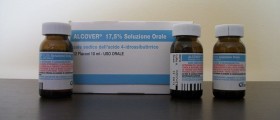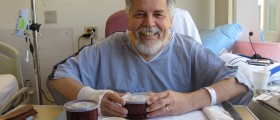
Acute intermittent porphyria is a member of a group of diseases called the porphyrias which are all characterized by some defect in heme metabolism. The result of such defects is disproportionate and excessive production of porphyrins and their precursors. The condition typically leads to abdominal pain, constipation and neuropathy. Rash, which is a common characteristic of porphyria in general, is in case of acute intermittent porphyria absent.
Pathophysiology of the Disease
Acute intermittent porphyria is inherited in an autosomal dominant fashion. All the symptoms and signs of the condition develop as a consequence of defects in the enzyme porphobilinogen-deaminase. This enzyme is of major importance when it comes to accelerating the conversion of porphobilinogen into hydroxymethylbilane. As a result, in people suffering from acute intermittent porphyria the porphyrin precursors, porphobilinogen and amino-levulic acid, accumulate.
Such excess of porphyrin precursors is responsible for neurologic damage (both peripheral and autonomic neuropathies) and psychiatric manifestation. The disease generally first occurs between the age of 18 and 40.
Clinical Characteristics of Acute Intermittent Porphyria
Patients first experience abdominal pain, then develop psychiatric symptoms and finally end up with neuropathies (predominantly motor neuropathies).
It is confirmed that majority of patients are symptom-free between the attacks. There are no skin manifestations of the disease.
Abdominal pain may last for several days and is quite severe. Autonomic neuropathies may lead to constipation, colicky abdominal pain and hypertension. Central nervous system signs include mental status changes, seizures, cortical blindness, delirium, depression and coma. Peripheral neuropathies may mimic other conditions such as Guillain-Barré syndrome. And finally, there is a wide variety of psychiatric symptoms.
Treatment for Acute Intermittent Porphyria
Recovery can be achieved with a high-carbohydrate infusion (10% glucose). If the attack has been induced by some drugs, these are supposed to be discontinued. Infection may be the trigger factor and must be dealt with promptly. Pain and additional symptoms require proper treatment.
Patients suffering from this condition receive hematin and heme arginate drugs. In order to be effective, these drugs must be administered as early as possible. These drugs do not cure the disease, because acute intermittent porphyria is simply incurable, but can shorten the attacks and reduce their intensity. They are also efficient against accumulation of toxic porphyrin precursors.
Patients who have developed chronic neuropathy as well as those with frequent attacks require chronic pain treatment. For this purpose doctor may choose among multiple treatment modalities. Depression is treated with antidepressants. Treatment for seizures can be quite complex and problematic since many seizure medications actually trigger the attacks. Still, with a proper combination of certain drugs doctors can achieve both, bring seizures under control and prevent potential acute intermittent porphyria attacks.











-and-Multiple-Sclerosis-Differences-And-Similarities_f_280x120.jpg)





Your thoughts on this
Loading...